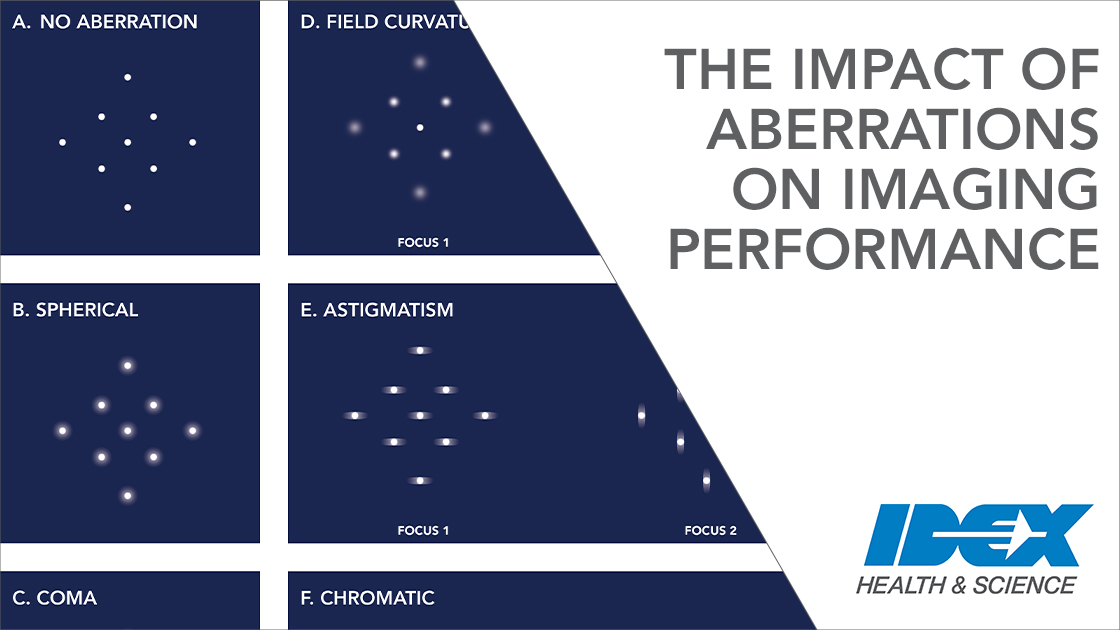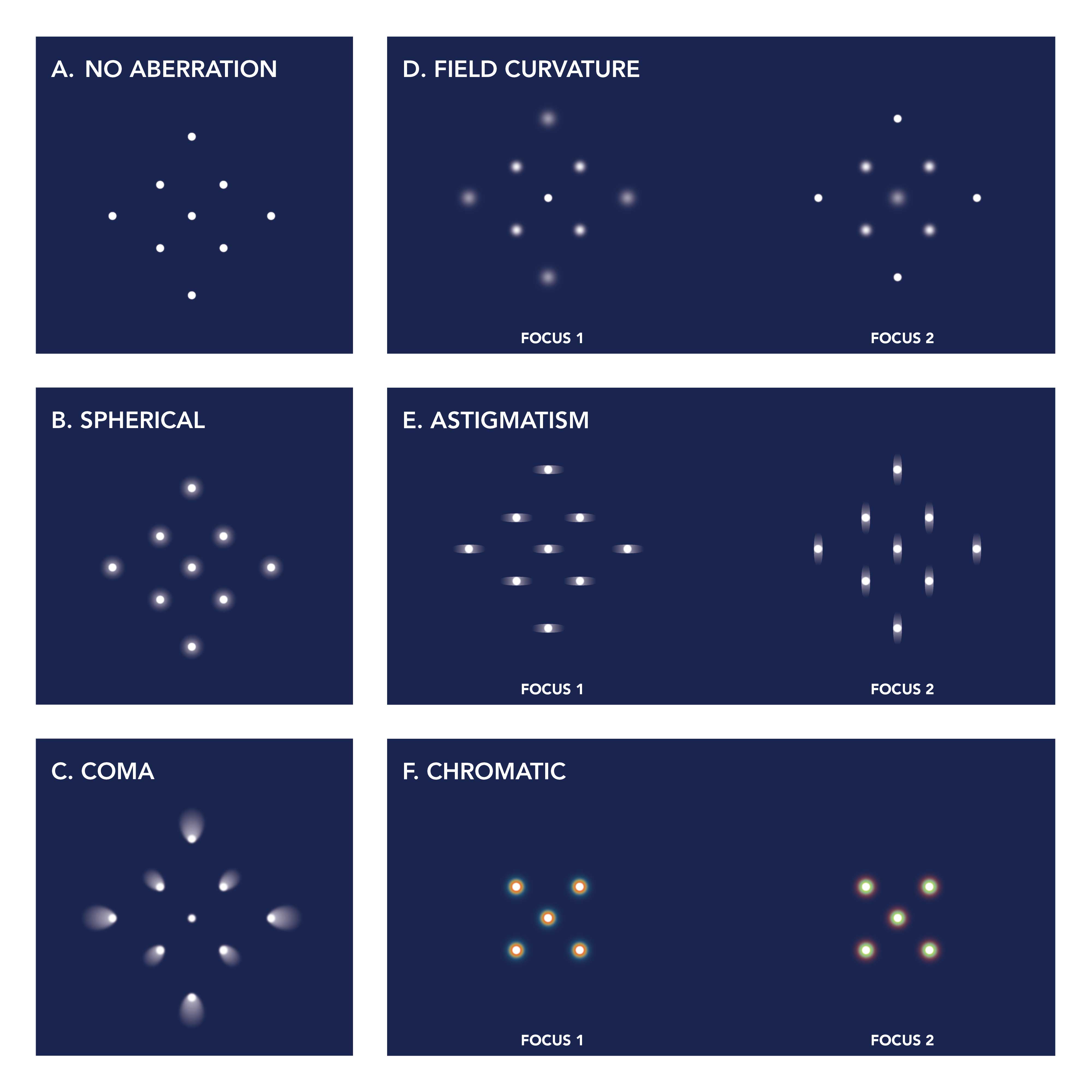

The Impact of Aberrations on Imaging Performance

Even the best objective lenses can face aberrations that compromise image quality. Understanding common aberrations is vital for creating high-performance optical systems that deliver the sharp, diffraction-limited imaging needed today.
To achieve ideal resolution, high-performance objective lenses must be designed to provide diffraction-limited imaging across the FOV. To maintain diffraction-limited imaging, the lenses must be fabricated with tight tolerances and mounted very accurately with respect to one another. Aberrations are artifacts in images that can arise from geometry, material properties and assembly errors. Many different aberrations can be present simultaneously to reduce the resolution of the optical system. The figure below illustrates the effect of different types of common aberrations on the image of a grid of points.

Figure 1. (a) field of dots with no aberrations, (b) spherical aberrations, (c) coma, (d) field curvature at two foci, (e) astigmatism at two foci, (f) chromatic aberration at two foci.
When spherical aberration (Figure 1b) is present in a microscope objective lens, the focal length of the objective varies with pupil radius, causing the marginal ray to focus at a different position than a ray closer to the optical axis. Coma (Figure 1c) occurs when the magnification of the system varies with pupil position, causing a dot to flare out and look like a comet, or ice cream cone, when imaged through the system. Field curvature (Figure 1d) describes the phenomenon where the lens best focuses the image on a spherical surface rather than a plane. When using a flat sensor, a lens with field curvature will not be able to bring the full field of view to focus in one image.
Astigmatism causes the optical system to have a different focal length for rays in the horizontal and vertical meridians. This results in the optical system having two foci that are shaped as ellipses rather than points (Figure 1e). Astigmatism can arise from assembly errors such as tilt or decenter of elements, as well as stress caused by improper cementing of doublets and triplets. One of the many reasons our IDEX Health & Science team can deliver diffraction-limited imaging performance is because we have optimized the optical assembly process to minimize astigmatism in our objective lens assemblies.
Distortion can occur even when all rays successfully reach the detector in perfect focus. The position of the points on the focal plane may be distorted in a pincushion or barrel shape. This is because distortion causes the magnification of the system to vary with image height. Although distortion does not impact whether or not a feature is resolvable, it can make it difficult to map features from the sample to the image or from one camera to a second camera. IDEX Health & Science routinely designs objective lenses with very low distortion that follows a simple polynomial fit, simplifying the process of distortion correction for our customers.
Understanding optical aberrations is crucial for achieving superior imaging. At IDEX Health & Science, we've mastered overcoming these challenges, designing and fabricating our objective lenses with meticulous assembly for unparalleled clarity and precision.
Ready to experience the difference? Contact us today to discuss your specific needs or download our newest tech note,"Key Specifications for Custom Microscope Objective Lenses ," to help you achieve the resolution and image quality you've been searching for.
